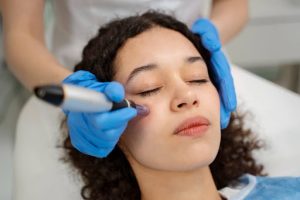Microneedling has become one of the most popular treatments for rejuvenating skin, reducing acne scars, and minimizing fine lines. If you’re already using retinol in your skincare routine, you might be wondering when it’s safe to reintroduce this powerful ingredient after your microneedling session. Understanding the proper timeline is essential for achieving optimal results while protecting your healing skin.
What Is Microneedling?
Microneedling is a minimally invasive cosmetic procedure that uses tiny, sterile needles to create controlled micro-injuries in the skin’s surface. These microscopic punctures trigger your body’s natural healing response, stimulating the production of collagen and elastin: two essential proteins that keep skin firm, smooth, and youthful.
The procedure is effective for treating various skin concerns including acne scars, surgical scars, enlarged pores, fine lines, wrinkles, and uneven skin texture. While the needles create tiny channels in your skin, these microscopic wounds are intentional and carefully controlled to promote healing and regeneration without causing lasting damage.
Immediately following treatment, your skin will appear red and may feel sensitive, similar to a mild sunburn. This is a normal response and indicates that the healing process has begun. Over the following days and weeks, your skin works to repair these micro-injuries, producing fresh collagen that gradually improves your skin’s appearance.
Why Retinol and Microneedling Don’t Mix Immediately
Retinol is a vitamin A derivative celebrated for its anti-aging benefits. It accelerates cell turnover, boosts collagen production, and helps fade hyperpigmentation. However, retinol is also known for being a potent active ingredient that can cause irritation, especially on compromised skin.
After microneedling, your skin is in a vulnerable state. The tiny channels created during treatment remain open for a period of time, making your skin more permeable and sensitive. Introducing retinol too soon can lead to several problems including excessive irritation, prolonged redness, increased sensitivity, potential inflammation, and delayed healing.
Both microneedling and retinol work to stimulate collagen production, but using them together too quickly essentially overwhelms your skin. Your skin needs time to complete its initial healing phase before it can handle the additional exfoliation and cell turnover that retinol provides.
When to Start Retinol After Microneedling?
Generally, doctors recommend waiting at least 48 hours to one week before reintroducing retinol after microneedling. However, this timeline varies based on several important factors.
- For shallow or superficial microneedling treatments, those using shorter needles, you may be able to resume retinol use after 24 to 48 hours, once your skin no longer feels sensitive and appears relatively normal.
- For standard depth microneedling, which is the most common type of treatment, waiting 3 to 7 days is typically recommended. This gives your skin adequate time to heal and the micro-channels to close completely.
- If you underwent deeper microneedling for more significant scarring or skin concerns, you should wait a full 7 to 14 days before reintroducing retinol. Deeper treatments create more extensive micro-injuries that require longer healing periods.
The strength of your retinol product also matters. If you use a high-concentration retinol formula (0.25% or higher), consider waiting toward the longer end of the recommended timeframe. Starting with a lower concentration when you do resume can also help minimize potential irritation.
How to Reintroduce Retinol Safely
When you’re ready to add retinol back into your routine, take a gradual approach. Start by using retinol just once or twice per week for the first week, then slowly increase frequency as your skin tolerates it. If you typically use a high-strength retinol, consider temporarily switching to a lower concentration as you reintroduce it.
Apply retinol only at night, as it can increase sun sensitivity. Always follow with a moisturizer to help buffer any potential irritation. Most importantly, continue using broad-spectrum sunscreen with at least SPF 30 every day, as both microneedling and retinol make your skin more vulnerable to sun damage.
Conclusion
While both microneedling and retinol are powerful tools for achieving healthier, younger-looking skin, they shouldn’t be used in immediate succession. When in doubt, consult with the practitioner who performed your microneedling procedure. They can provide personalized guidance based on your specific treatment parameters and skin type.
Read more:
Is Microneedling Bad For Mature Skin?






